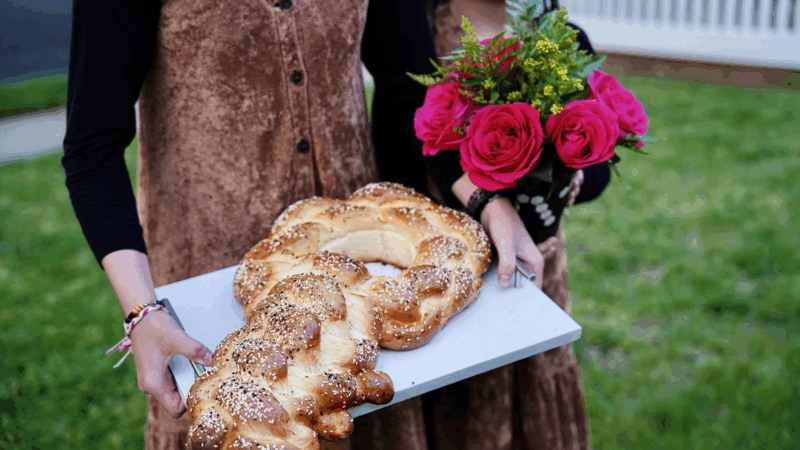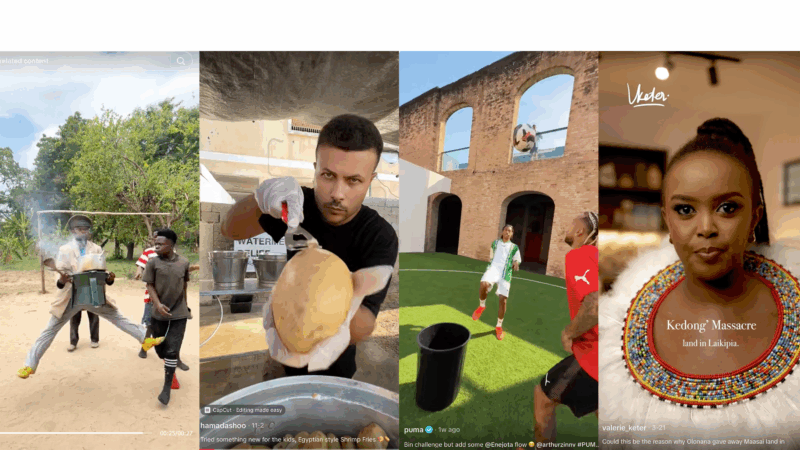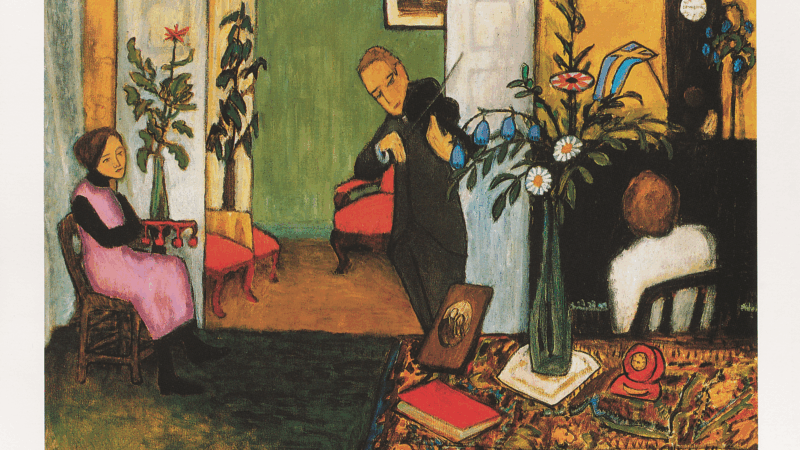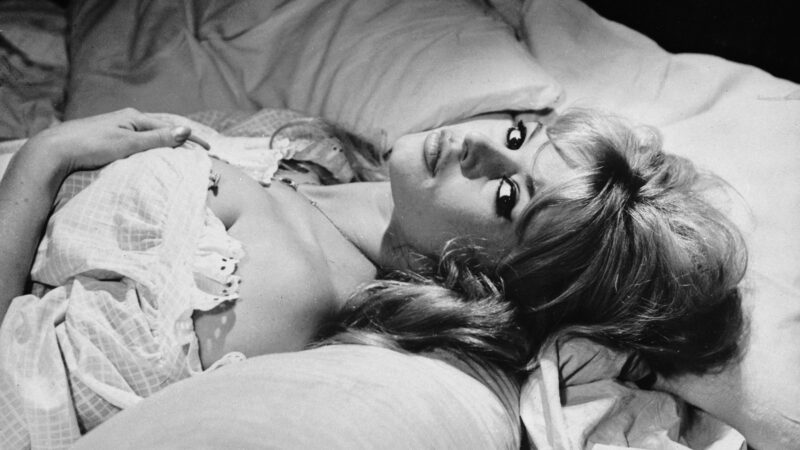A Jewish baking tradition rises in the age of Instagram
Religious tradition is not handed down fully formed from God on high. It’s made by people, and shaped by human factors — politics, faith, fear, geography, community. And, sometimes, how pretty something looks on Instagram. Like shlissel challah.
A post-Passover tradition
Shlissel challah is the name given to the special challah baked for the first shabbat after Passover. During the holiday, many Jews avoid leavened products — that means no bread, lots of matzo. It would be understandable that after 8 days of flatbread, a return to fluffy, golden loaves of challah would be a celebration. But it doesn’t just stop there.
“So shlissel is Yiddish for key,” explains Shayna Weiss, the sSenior sAssociate dDirector at the Schusterman Center for Israel Studies, and affiliate faculty of Near Eastern and Judaic Studies at Brandeis University.
“Shlissel challah is a custom that many Ashkenazi Jews have, where for the Shabbat after Passover, they bake challah either into the shape of a key, or with a key inside of the challah. And it’s supposed to be what’s called a segula, which is like a sort of good luck omen, for parnassa, for livelihood.”
As with a lot of home customs, the origins of shlissel challah aren’t super clear— like why even a key at all?
”Judaism — I should say, or some parts of Judaism — likes to think of itself as a set of practices, right?” says Weiss. “But there’s always going to be a gap in what is sort of set out in a book, and what academics call mimetic practice, or sort of daily or lived practices.”
Weiss says this particular home practice comes from the Orthodox tradition, likely in the 19th century, and there may be some parallels to other bread traditions. But this old tradition is perfect for the current social media moment.
#ShlisselChallah
Search the hashtag online, and you will see examples from rustic to ridiculously ornate, from home bakers and Orthodox “challah influencers.” Some are lumpy and misshapen, some are crafted of intricately swirled braids of all sizes, some look like they could unlock a magical yeasted fairy house. And you’ll find many people baking shlissel challah not because they grew up with this tradition, but because they saw one of these beautiful pictures online.
If you want a ‘gram-worthy shlissel challah, there are a few tips. Sonya Sanford is a chef, food writer and podcast host who has taught challah workshops (and whose cookbook happens to be called Braids).
Sanford says you can use any challah recipe, but make sure your dough is relaxed enough to work with (if it wants to shrink back, just cover and set aside for a few minutes), and roll out your strands longer than you want the finished loaf (to account for the length you’ll lose in braiding). And, most importantly, let it rise fully before baking.
“One of the things that people often ask me is, ‘why is my challah splitting? Why don’t my braids look good together?'” says Sanford. “And it’s usually because you haven’t let your challah rise for long enough during the second rise. That’s particularly important with a shlissel challah, because you want it to hold its key-like shape. So if you pop it in the oven too early, it might split and break apart.”
Sanford also favors brushing the loaf with an egg wash twice for a beautifully golden key— once at the beginning of rising, and then a second time right before it hits the oven.

Superficial or significant?
With this parade of beautiful loaves and hashtags, it’s easy to wonder — is this a religious practice? Or a social media performance? Professor Shayna Weiss says the answer might be … yes.
“I think any time you put something on Instagram, it’s a performance. And of course raises the question, right? Like, if you make a shlissel challah and you don’t take a picture of it, right, does it even count?” laughs Weiss. But she says something can be both a performance, and an authentic practice.
Weiss says shlissel challah can be just as real as any other ritual. And while Sephardic families have a ceremony to mark the end of Passover, for Jews with roots in Eastern Europe, there’s a bit of a ritual vacuum.
“Passover starts with a huge bang. Right. You clean a lot. The Seder is this really long dramatic ceremony — it’s at night, it often goes late. And it can end with sort of a whimper.”
Weiss says a beautiful shlissel challah can mark that end, and bookend the holiday’s celebration.
Changing shape, changing meaning
The look of shlissel challah has undeniably changed, as influencers share braiding tips and techniques. And people aren’t just playing around with the form — they’re also reinterpreting the meaning. The traditional key is meant to unlock economic success. But Weiss says shlissel challah, like all traditions, can be slippery.
“It’s a great symbol, right? It works for all sorts of things, that this key can unlock… the door to whatever you want it to be,” says Weiss.
For chef and food writer Sonya Sanford, it’s an opportunity to make the ritual anew every year.
“We can all set intentions for this new cycle. It’s spring, Passover has just ended. There’s these ideas of liberation. What else do we wanna liberate? What do we wanna step into?” she asks.
And for Sanford, whose family immigrated from Ukraine because of religious persecution, these ideas of liberation are on her mind. And she sees social media not just as superficial, but as part of that process.
“I always feel like the freedom I have to have these rituals to celebrate them openly to post about them online is sort of a miracle,” says Sanford. “And one not to be taken for granted.”
And while she takes care with braiding and rising to improve chances of a beautiful loaf, Sanford notes that even a misshapen shlissel challah can be meaningful, and delicious, and shared with family and friends. Which is the real key to the ritual.
Transcript:
JUANA SUMMERS, HOST:
Religious tradition is not handed down fully formed from God on high. It’s made by people and shaped by human factors like politics, faith, fear, geography and community – and sometimes how pretty something looks on Instagram. Deena Prichep brings us the story of shlissel (ph) challah.
DEENA PRICHEP, BYLINE: Many Jews recently observed Passover by avoiding leavened products for eight days. No bread, lots of matzah – and for this first Shabbat after Passover, there will be a triumphant return to fluffy, golden loaves of challah but with a key difference.
SONYA SANFORD: So I like to start with the central sort of top of the key shape.
PRICHEP: Food writer Sonya Sanford is making a shlissel challah. This post-Passover challah comes from the Orthodox tradition, where challahs are either baked with a key inside or braided into the shape of a key. Sanford’s looks like it could open some magical yeasted fairy house. It’s made from several braids looped together.
SANFORD: You can press it in gently, but it will sort of bake into each other. It’s going to really expand as it bakes.
PRICHEP: After a slow rise and a sprinkle of sesame seeds…
(SOUNDBITE OF SEEDS CRACKLING)
PRICHEP: …It goes in the oven.
(SOUNDBITE OF METAL CREAKING)
PRICHEP: As with a lot of home customs, the origins of shlissel challah aren’t super-clear. Like, why even a key at all? Shayna Weiss teaches Jewish studies at Brandeis University.
SHAYNA WEISS: And it’s supposed to be what’s called a segula (ph), which is, like, a sort of good luck omen for parnassah (ph) – for livelihood.
PRICHEP: Weiss says the earliest mentions of shlissel challah are from the 19th century. But it is kind of perfect for the current social media moment. Search #shlisselchallah and you will see examples from rustic to ridiculously ornate, from home bakers and Orthodox challah influencers, and people baking shlissel challah specifically because they saw a picture online.
WEISS: And I think any time you put something on Instagram, it’s a performance. And it, of course, raises the question – right? – like, if you make a shlissel challah and you don’t take a picture of it – right? – does it even count? But I don’t want to assume that their performance is automatically inauthentic or sort of not real.
PRICHEP: Weiss says shlissel challah can be just as real as any other ritual. And while Sephardic families have a ceremony to mark the end of Passover, for Jews with roots in Eastern Europe, there’s a bit of a ritual vacuum.
WEISS: Passover starts with a huge bang, right? You clean a lot. The Seder is this really long, dramatic ceremony. And it can end with sort of a whimper.
PRICHEP: A beautiful shlissel challah can mark that end. And Weiss says people aren’t just playing around with the pretty shape. They’re also reinterpreting the meaning.
WEISS: It’s a great symbol, right? It works for all sorts of things – that this key can unlock the door to whatever you want it to be.
PRICHEP: For Sonya Sanford, whose shlissel challah is starting to smell amazing, it’s an opportunity to make the ritual anew every year.
SANFORD: We can all set intentions for this new cycle. It’s spring. There’s these ideas of liberation. What else do we want to liberate? What do we want to step into?
PRICHEP: Sanford’s family immigrated from Ukraine because of religious persecution.
SANFORD: I always feel like the freedom I have to have these rituals – to celebrate them openly, to post about them online – is sort of a miracle, and one not to be taken for granted.
PRICHEP: Sanford says there are a few ways to improve your chances of a beautiful shlissel challah. Make sure the dough rises fully so it holds its shape in the oven. Do a double egg wash for a golden finish. But, she says, even a misshapen challah can be meaningful and delicious and shared with family and friends, which is the real key to the ritual. For NPR News, I’m Deena Prichep.
(SOUNDBITE OF MUSIC)
‘Bomb cyclone’ forecasted to bring heavy snow, blizzard conditions and dangerous travel
A 'bomb cyclone' is intensifying severe winter weather for millions of people across the U.S. The system is expected to knock out power and disrupt holiday travel.
Russia sends 3 Iranian satellites into orbit, report says
The report said that a Russian rocket sent the satellites on Sunday from a launchpad in eastern Russia.
Viral global TikToks: A twist on soccer, Tanzania’s Charlie Chaplin, hope in Gaza
TikToks are everywhere (well, except countries like Australia and India, where they've been banned.) We talk to the creators of some of the year's most popular reels from the Global South.
This painting is missing. Do you have it?
An important work from a rediscovered artist has been absent from public view since the 1970s. A New York curator is hunting for it.
Memory loss: As AI gobbles up chips, prices for devices may rise
Demand for memory chips currently exceeds supply and there's very little chance of that changing any time soon. More chips for AI means less available for other products such as computers and phones and that could drive up those prices too.
Brigitte Bardot, sex goddess of cinema, has died
Legendary screen siren and animal rights activist Brigitte Bardot has died at age 91. The alluring former model starred in numerous movies, often playing the highly sexualized love interest.








